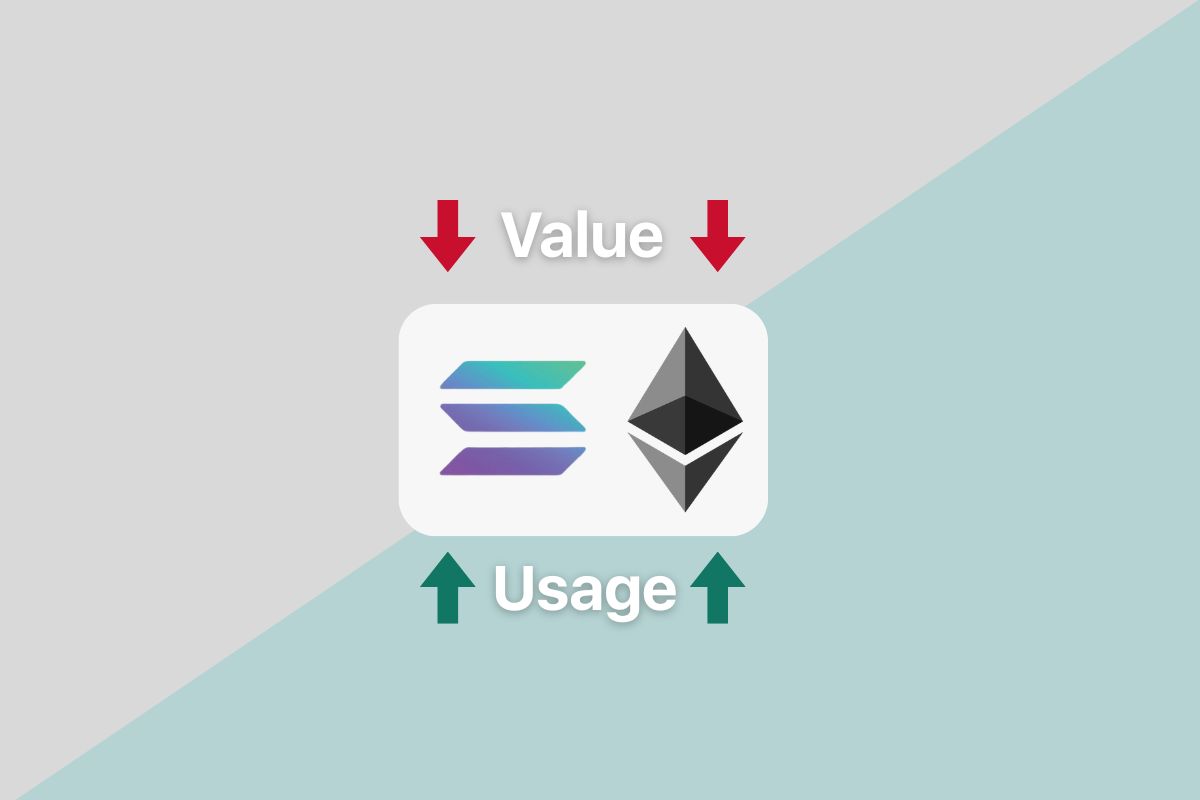Layer 1 (L1) blockchains like Ethereum and Solana have opened a new frontier for decentralized application (dApp) development. From decentralized finance (DeFi) to tokenized real-world assets (RWAs), these platforms promise a secure, censorship-resistant foundation for next-generation applications. Still, there’s a growing argument that while L1 platforms will succeed as essential infrastructure, their native tokens may not capture significant long-term value. Let’s explore why.

L1s as “Blockspace Providers”
At their core, Layer 1 blockchains sell “blockspace.” Developers pay transaction fees—denominated in the L1’s native token—to record operations immutably and without censorship.
Key Point: Where there’s a centralized token issuer or link in an application, the trust advantage of a public blockchain is diluted—users are essentially trusting the issuer, not just the chain.
The Commoditization of Blockspace
A multitude of L1s and Layer 2 (L2) solutions now vie for Despite strong demand for secure, scalable blockchains, blockspace is becoming a commodity. Competing L1s and Layer 2 (L2) solutions like Arbitrum or Optimism offer similar benefits at potentially lower costs.
- Competition: If one chain’s gas fees become too high (often due to a rising token price), users and developers may move to cheaper alternatives.
- User Experience Trade-Off: High token price → high gas fees → worse UX → fewer developers and users.
- Chain Incentives: L1s must balance token appreciation with affordability. Excessive token value can drive fees up and stifle developer adoption.
Bottom Line: L1 success often depends on lower fees to encourage network use, which puts downward pressure on the native token’s upside.
Network Effects vs. Reality
One common argument is that L1 blockchains generate powerful network effects. Once they host a critical mass of users, developers, and liquidity, it’s hard for new chains to compete. This is partially true, but often overstated.
- Native Assets vs. RWAs: Network effects are strongest for purely on-chain assets (e.g., ETH, SOL). For tokenized real-world assets, a trusted intermediary (issuer/custodian) underpins the asset’s value.
- Diluted Trustlessness: If there’s already a central issuer, the unique trustless advantage of the blockchain is reduced—users care more about the issuer than the chain.
- Distribution Still Matters: Financial institutions have deep, established distribution channels. Tokenizing assets on a blockchain doesn’t replace that network; it merely shifts the ledger.
Takeaway: Tokenizing RWAs on an L1 doesn’t guarantee long-term value accrual for that L1’s token if a significant part of trust is with a centralized issuer.
The Real Value: Distribution
In traditional finance, distribution is king. Many institutions derive the majority of their value from their large customer bases and market reach—far more than from their technology.
- Trusted Networks: Banks, asset managers, and large corporates use blockchains more for efficiency than to replace their customer relationships.
- No Fundamental Disruption: Smart contract platforms don’t necessarily dismantle an intermediary’s value proposition. Those issuing tokenized assets still control distribution, limiting the L1 token’s share of the pie.
Implication: The success of L1 blockchains as infrastructure doesn’t automatically translate to exponential growth of their native tokens when centralized entities control real-world assets.
Remember Cisco? Essential Infrastructure, Limited Value Capture
A compelling historical comparison is found in the early days of the internet. Infrastructure companies like Cisco built the routers and networking hardware that powered the web’s global expansion. While they were vital to the internet’s functionality, the most explosive growth in value occurred at the application layer—think of giants like Google, Amazon, and Facebook.
- Infrastructure Is Necessary: Without Cisco and similar firms, the internet couldn’t scale.
- Apps Capture Most Value: Ultimately, end-user applications generate network effects and massive user bases.
Similarly, L1 blockchains are the essential “rails,” but much of the value accrual is likely to happen in applications—whether they’re DeFi protocols or RWA tokenization platforms.
Conclusion
Layer 1 blockchains will continue to thrive as the backbone of trustless applications and financial innovation. Their blockspace is valuable, and competition will only push them to become cheaper and more efficient. However, native tokens may face limited upside due to:
- Blockspace Commoditization: Competition keeps fees low.
- Cost-Sensitive Adoption: High token value can reduce usability and deter developers.
- Diluted Trustlessness in RWAs: Centralized issuers overshadow the chain’s trust model.
- Distribution Dominance: Existing institutions retain user trust and reach.
- Infrastructure vs. Application Layer: As with Cisco, the essential infrastructure doesn’t necessarily reap the biggest share of value.
Ultimately, while these L1 platforms will be indispensable for the web of decentralized applications, it’s the application layer—particularly in areas like DeFi, stablecoins, and tokenized assets—where the greatest value may be realized.
Bitcoin is arguably the exception because it attempts to replace fiat currencies entirely, thus challenging the very concept of centralized distribution. However, Ethereum, Solana, and other smart contract chains primarily aim to accommodate wide-ranging applications, including those built by centralized intermediaries. They aren’t necessarily challenging those intermediaries’ core distribution or trust models

